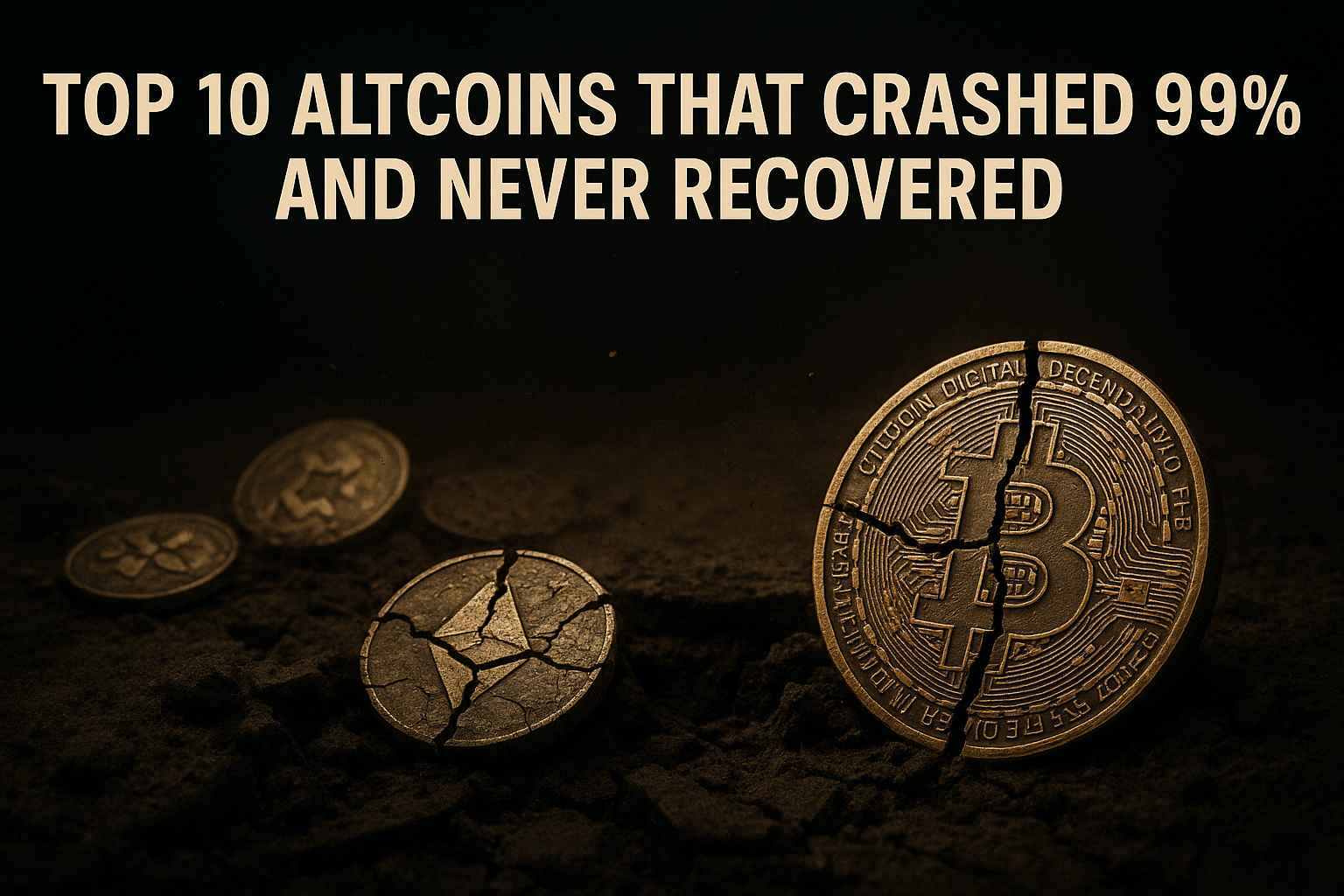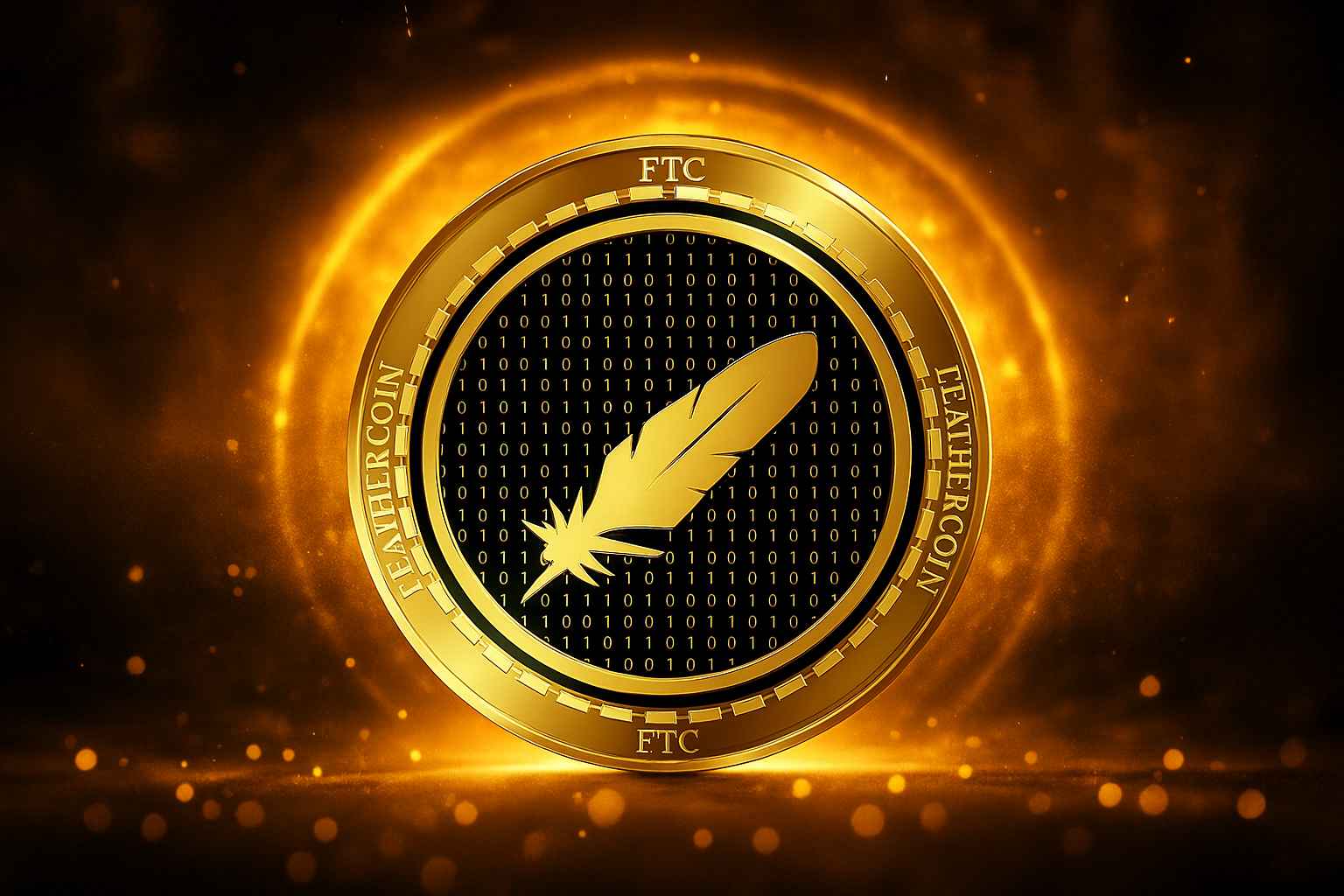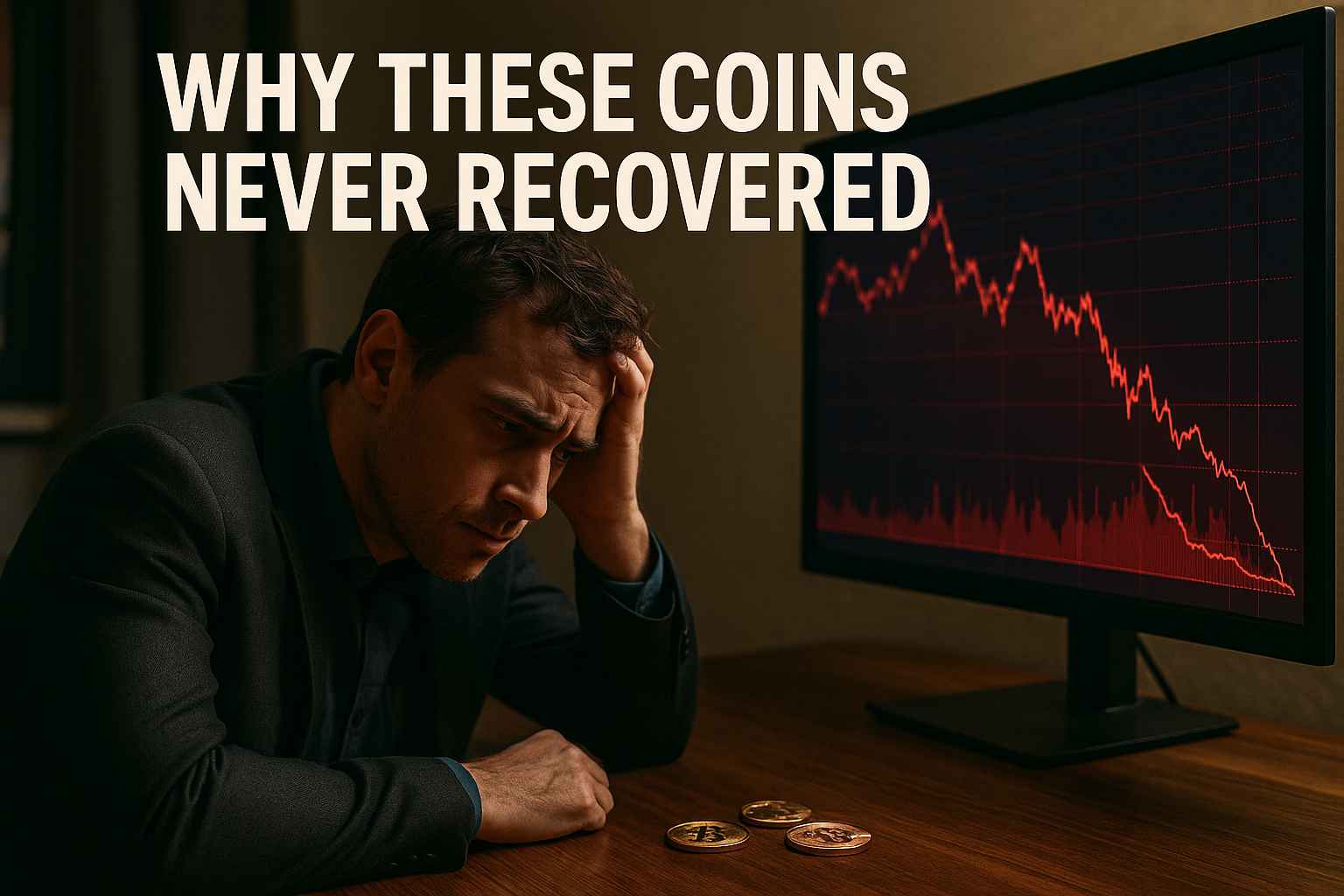The cryptocurrency world is brutal. One day you’re the hottest coin on the market, the next you’re a digital relic worth less than a used bus ticket. While Bitcoin and Ethereum somehow keep holding their ground, countless altcoins have fallen from grace—some by a jaw-dropping 99% or more—and never got back up. These coins promised the moon but ended up face-first in the dirt.

In this list, we’re taking a harsh, realistic look at 10 altcoins that suffered catastrophic crashes and never recovered. Think of it as a graveyard tour of crypto’s most spectacular failures—projects that prove hype alone can’t keep a coin alive.
BitConnect (BCC)
BitConnect wasn’t just a coin—it was a global meme in the making. If you were around in 2017, you probably remember the overly enthusiastic “BitConnneeect!” guy shouting at the top of his lungs during conferences. Behind the hype, BitConnect was essentially a Ponzi scheme dressed up as a crypto investment platform.
At its peak, BCC was trading at around $463. Then the truth came out. Regulators started cracking down, and the platform shut its lending program in early 2018. Within days, BCC’s price plummeted over 99%, leaving investors with worthless tokens. Unlike Bitcoin dips that have a “just HODL” hope, this coin was dead—no revival, no comeback tour.
Terra (LUNA)
LUNA was supposed to be the backbone of the Terra ecosystem, powering the UST stablecoin. For a while, it worked. LUNA rocketed from a few cents to over $119 in April 2022. The hype was unstoppable… until it wasn’t.
When UST lost its peg to the dollar in May 2022, panic set in. The algorithmic mechanism meant to stabilize UST completely failed, triggering a death spiral. LUNA’s supply exploded into trillions, and the price collapsed to fractions of a cent—wiping out billions in investor money overnight. No amount of rebranding could save the original coin; it’s a zombie that never came back to life.
SafeMoon (SAFEMOON)
SafeMoon rode the wave of the 2021 meme coin craze, selling itself as a “safe” alternative to the volatile market. It had a clever gimmick—charging a transaction fee and redistributing part of it to holders—but gimmicks don’t replace fundamentals.
At its height, SafeMoon had millions of holders and a market cap in the billions. But lack of real-world utility, poor transparency, and constant accusations of being a “slow rug pull” drove its price down more than 99%. Many early believers are now left holding bags so light they might as well be filled with helium.
Verge (XVG)
Verge pitched itself as a privacy coin that could rival Monero and Zcash. It had a devoted community, catchy branding, and even a partnership with adult entertainment giant Pornhub. But behind the scenes, Verge was plagued by security breaches.
In 2018 alone, Verge suffered multiple 51% attacks, which shattered investor confidence. The price never recovered from its all-time high of $0.30, crashing more than 99% and staying there. Privacy coins can survive attacks, but Verge’s credibility was gone for good.
Feathercoin (FTC)

Feathercoin was launched back in 2013, making it one of the earliest altcoins. It marketed itself as a faster, cheaper alternative to Bitcoin. For a while, it had a small but loyal community.
Unfortunately, “loyalty” doesn’t stop market irrelevance. FTC’s development slowed to a crawl, competitors with better tech emerged, and its price plummeted. From an all-time high of $1.50, Feathercoin now trades at prices so low you’d need a calculator just to count the zeros.
Ethereum Classic Vision (ETCV)
This wasn’t even a legitimate Ethereum fork—it was a scam from the start. Launched during the height of Ethereum Classic’s popularity, ETCV tricked people into thinking they were getting free coins from a hard fork.
The reality? The project was run by scammers who dumped the pre-mined supply onto the market as soon as trading began. Prices crashed almost instantly, wiping out over 99% of value and leaving buyers with useless tokens. It’s a perfect example of why not every “fork” is a golden opportunity.
PayCoin (XPY)
PayCoin was hyped as the future of digital payments back in 2014. Its creator, Josh Garza of GAW Miners, promised a $20 price floor supported by massive reserves. Spoiler: there were no such reserves.
When the truth came out, PayCoin collapsed from around $20 to mere cents. Garza was later convicted of fraud, and XPY never recovered. The only thing it achieved was a permanent spot in crypto scam history.
OneCoin
Technically, OneCoin wasn’t even a real cryptocurrency—it didn’t have a blockchain. But that didn’t stop it from sucking in billions from gullible investors worldwide. Founder Ruja Ignatova, now known as the “Crypto Queen,” disappeared in 2017 and is still on the FBI’s most wanted list.
OneCoin’s value was entirely fabricated, and when the scheme collapsed, holders had nothing to sell because there was no actual coin to trade. The “99% crash” here was really a 100% wipeout—investors lost everything.
Dentacoin (DCN)
Dentacoin marketed itself as “the blockchain for the dental industry.” Yes, you read that right—a cryptocurrency for dentists. It aimed to create a global dental network where patients and professionals could interact and pay in DCN tokens.
The idea was niche… maybe too niche. With minimal adoption and no strong demand, DCN’s value evaporated. From an all-time high price so small you’d still need to squint at it, the coin fell over 99%, joining the graveyard of bizarre crypto experiments.
DAO Token (The DAO)
The DAO was an ambitious Ethereum-based project in 2016, aiming to be a decentralized venture capital fund. Investors poured in over $150 million worth of ETH. But then disaster struck—a hacker exploited a vulnerability and siphoned off millions.
The Ethereum community voted to hard fork the chain to recover the stolen funds, creating what we now know as Ethereum (ETH) and leaving the original chain as Ethereum Classic (ETC). DAO tokens were rendered useless, their value gone in an instant.
Why These Coins Never Recovered

The crypto market is wild, but not all losses are created equal. Some coins crash due to general market dips and can bounce back. Others—like the ones we’ve listed—suffer from fatal flaws: fraud, security breaches, broken promises, or a lack of real utility.
Recovery requires trust, development, and community support. Once those are gone, the coin might as well be a digital fossil. These projects weren’t just “down”—they were dead on arrival after the crash.
Lessons From the Graveyard
These coins serve as harsh reminders for crypto investors. Hype alone isn’t enough. Fancy websites, celebrity endorsements, and wild price predictions mean nothing without solid fundamentals and transparency.
If you don’t do your own research, you’re basically gambling blindfolded. And in crypto, that’s like walking into a minefield wearing clown shoes—dangerous and likely to end badly.
Conclusion
The crypto market can be thrilling, but it’s also unforgiving. The coins we’ve covered today aren’t just bad investments—they’re cautionary tales. They promised innovation but delivered disaster. Whether it was due to scams, hacks, or just plain uselessness, they all share one thing in common: a 99% crash that they never bounced back from.
So the next time you see a coin “going to the moon,” remember—moons can also have craters.
FAQs
1. Can a coin that crashes 99% ever recover?
It’s possible but extremely rare. Once trust is lost and demand dries up, most coins never come back.
2. How do I avoid investing in a coin that might crash like this?
Do thorough research, check the team’s credibility, and avoid coins without real-world use cases.
3. Are all altcoins risky?
Yes, but some are much riskier than others. Established projects with active development are safer than random hype coins.
4. Is meme coin investing dangerous?
Absolutely. Meme coins rely heavily on hype, and once the hype fades, prices often collapse.
5. What’s the safest crypto investment?
No crypto is truly “safe,” but Bitcoin and Ethereum have the longest track records and largest communities.
